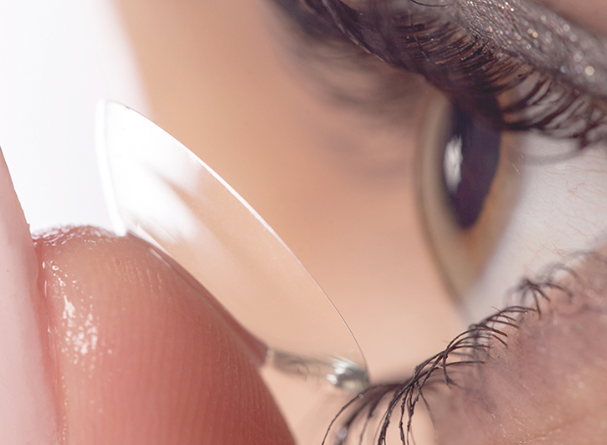How to get started with contact lenses
If you’ve never worn a contact lens before, the whole process can seem a bit daunting.
But don’t worry, we’re here to help!
Where to begin
Contact lenses are a fantastic way to improve your vision without having to wear glasses. They are a type of corrective lens used to improve vision; usually made of soft, flexible plastic and are placed directly on the eye.
Many eye doctors offer a contact lens trial, which allows you to test out the lenses for a period of time to see if they work well for you. This is a great way to find out if contact lenses are right for you before making a long-term investment.
But before you can start enjoying the benefits of contact lenses, there are a few things you need to know.
Here’s a quick guide on how to get contact lenses:
– Firstly, you’ll need to visit an optometrist or ophthalmologist to get your contact lens prescription.
– Once you have your contact lens prescription, it’s time to choose the right type of contact lens for you. There are many different types of contact lenses available on the market today, it is easy to find a pair that will meet your individual needs.
– Once you’ve chosen your contact lens type, it’s time to select the right size and brand. There are many different brands of contact lenses on the market, so it’s important to do your research and choose one that’s suitable for your needs.
Types of contact lenses
You can try various kinds of contact lenses through a trial period.
– The most common type of contact lens is the corneal contact lens, which is designed to sit on the surface of the eye.
– Another common type is the scleral contact lens, which is larger in diameter and covers the entire front surface of the eye.
– There are also contact lenses that are specifically designed for people with astigmatism or presbyopia.
– In addition, there are specialty contact lenses that can be used for cosmetic purposes or to correct vision problems caused by an injury or disease.
Focus on: TRIAL LENS
A trial lens is a lens that is used during an eye examination in order to determine the best possible lens prescription for the patient.
Many companies offer free trial contact lenses in exchange for your prescription, but you need to know how to find one. Some companies may be more generous than others, so you’ll need to do some research to find out whether the offer is right for you.
A trial lens is placed on the eye and the optometrist or ophthalmologist observes how well the patient sees with it in place. If the patient’s vision is significantly improved, then the prescription for that lens is likely to be prescribed. However, if the patient’s vision does not improve or worsens, then a different lens may be tried.
Trial lenses come in a variety of shapes and sizes and can be made from different materials, such as glass or plastic.
In addition, you can buy coloured prescription lenses from an optician. These lenses are known as Plano or no-prescription lenses. All you have to do is select 0.00 under the power/sphere column when ordering. You’ll then have to visit an optometrist or ophthalmologist for fitting to ensure that they fit properly.
After the trial period, you may order a supply of contacts. During this period, you’ll need to see the optician again a few weeks later.
When you’re considering a contact lens try-on, make sure you ask the doctor about the latest developments in the contact lens industry.
Cost of contact lenses
Unlike eye exams, most people don’t need to pay for this initial step. Generally, the first visit is covered by the insurance plan. In some cases, however, a follow-up visit is required. In these cases, the cost of contact lens fitting is typically between $25 and $210.
Contact lenses typically range in price from $10 to $100 per box, depending on the type of lens and the number of lenses in the box.
In general, daily wear lenses are more expensive than extended wear lenses, but they also require less care and maintenance. Discounts may be available for bulk purchases or for contact lens wearers who purchase an annual supply.
A consultation at a reputable clinic can be very beneficial, but it is important to note that your eye care provider is also responsible for ensuring the quality of the service you receive.
How to Insert Your Contacts In
Inserting contact lenses may seem daunting at first, but it’s actually quite simple! Just follow these steps and you’ll be a pro in no time.
1. Wash your hands thoroughly before handling your lenses. This will help to avoid any potential infections.
2. Carefully insert the lens into your eye. It may take a few tries to get the hang of it, but once you do it’ll be a breeze!
3. Make sure that the lens is seated properly on your eye before moving on. You should be able to blink normally without feeling any discomfort.
4. Once you’re done wearing them for the day, gently remove the lenses and clean them according to the manufacturer’s instructions.
How to Remove Your Contacts
It’s important to remember to remove your contact lenses. Here is how:
1. Dry your hands after washing them with soap.
2. Your non-dominant hand’s middle finger can be used to hold your upper eyelid open.
3. Hold your lower eyelid open with your dominant hand’s middle finger. With your thumb and index finger, pinch the lens, then remove it. You might also try squeezing it out after moving the lens lower.
4. Proceed by using your other eye.
Some tips to remember
Most people who wear contact lenses will have to deal with the occasional dry eye or contact lens irritation. However, there are a few simple steps you can take to ensure that your lenses are always comfortable.
– One of the most important things to remember is to never sleep with your contact lenses in. This can lead to serious eye problems, including corneal ulcers and contact lens intolerance. If you do happen to fall asleep with your lenses in, be sure to remove them as soon as possible and give your eyes a break.
– A way to keep your contact lenses clean and comfortable is to avoid using tap water to clean them. Tap water can contain impurities that can build up on your lenses and lead to irritation.
– Be sure to follow the manufacturer’s instructions for cleaning and storing your contact lenses.
Conclusion
Contact lenses can be a great alternative to eyeglasses, offering many benefits including convenience and comfort.
By taking these simple precautions, you can help ensure that your contact lenses are always safe and comfortable.
With a little bit of practice, you’ll be a pro at wearing and caring for your new contact lenses in no time!



